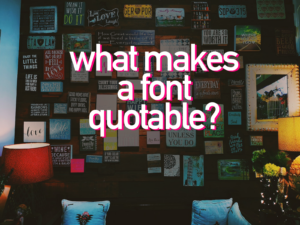Graphic designers are typically drawn to the industry because they are passionate about it. They must, however, not go without payment for their advantages.
While a full-time graphic designer’s salary is around $500-$2000 depending on the country and the experience, a freelance graphic designer’s income is varied. It is determined by the customer, the task to be done, and the professional’s abilities. A graphic designer who creates a logo, for example, maybe paid 800 or even 3500 dollars. The cost for a poster, on the other hand, varies between 200 and 500 dollars.
Generally, a freelance graphic designer will set his working rate based on the costs of his business as well as the value of his work (graphic design experience, reputation, and specialization). However, in order to give a final price to his customer, he must consider factors such as the type of project requested and its complexity (flyer, web design, graphic design, logo…).
Aside from the costs of starting work, a freelance graphic designer must budget for management, equipment, and software in order to work in good conditions. All these are included in the cost they offer their clients.
Regardless of whether the graphic designer’s work is governed by legal provisions, his contract must include specific conditions. It is also necessary to mention the following points:
- Intellectual property: a freelance graphic designer creates visuals. As a result, he is the author. However, because this intellectual work will become part of his client’s property, the freelancing contract must indicate the transfer. She might be free or chargeable;
- Copyright: The graphic designer may use existing pictures in the creation of visuals. It is possible, for example, to use or not use photographs of famous people. In this case, he may be required to obtain their permission. And this must be reflected in the service contract.
But…let’s discover: who is a graphic designer?
Generally, a graphic designer is an expert in the field of visual arts. He/She creates posters, drawings, sketches, and other forms of communication for its consumers, demonstrating originality and creativity. Graphic designers have two options: conducting these services working full or part-time for a company or just having freelance work.
If the graphic designer works for a business, he creates graphics for the firm on a regular basis in order to raise its awareness. In this scenario, he is employed under a permanent contract (permanent contract) or a contract of employment (CDD) and has an employee-employer relationship with the company’s CEO.
However, the graphic designer might choose to work as an independent contractor. There is no longer any employer-employee relationship, and there is no longer any work contract. It is preferable to use the terms “freelance contract” or “mission contract.” The graphic designer can then work from home or from a co-working space.
What are the advantages of being a freelance designer?
The benefits of becoming a freelance graphic designer are numerous. For starters, there are no time limitations. While at home, he can work at any time of day or night. He’ll be able to do it even on vacation. The only requirement is that you adhere to the customer’s deadlines.
Second, unlike full-time graphic designers, freelance graphic designers are less stressed. There is no employer, no job schedule, and no coworkers. He is also exempt from having to relocate to a new job. As a result, it saves money.
However, sometimes the position of a graphic designer is kind of battling with AI. There are so many logo maker websites/apps, tools to create posters and banners just in a few clicks, that if necessary, the companies don’t hire graphic designers. These apps generate ideas and help to fulfill their goals.
In fact, the use of AI combined with the skills of graphic designers might turn into magic.
How can you increase the cost of your work?
In order for a graphic designer to earn a lot, it is not so much skill that is important (although it also plays a role), but the ability to sell their services. To get profitable freelance orders, you need:
- Create a selling and eye-catching portfolio and make it into a presentation. The portfolio is the” face ” of the designer. You need to choose 5-6 successful cases that most fully reflect your professional level. Choose thoroughly and consider the market you are going into.
- Increase the price of their services gradually. Newcomers frequently bide their time, fearful of raising the price of labor for months because they feel clients would refuse to deal with a “conceited” specialist. Such approaches might lead to professional disappointment. Customers are actually purchasing a business solution rather than a painting. Demonstrate that your projects will have a positive impact.
- Work on you. No matter how much you have learned during your courses, you must always develop yourself, be up-to-date about trends and tricks. It’s up to you how much you will earn and how high your ranking will be.
- Be patient with your customers. A lot of people change their decisions, want to redo something and just even try a new style, you must always be kind to them. Sure, appreciate your time and efforts, but never be rude to them.
Some generic myths about the salary and work of a freelance designer
None of the professions pass along without myths. Graphic designers, in fact, are the most “mythical†workers. Why?
Let’s uncover some shrouded freelance designers truths considered myths
- Unstable income
Generally, people find the income of a graphic designer to be more unstable than those of working full-time. When you work at a “normal” job, your fate is in the hands of the employer. It’s like keeping all the eggs in one basket. On the other hand, graphic designers have several sources of income, and no one else is responsible for their fate.
- Freelance can just be a hobby
Many people consider freelance to be just a hobby and even sometimes a waste of time. Generally, such thoughts are brought around from people who are not in such a friendly relationship with IT. They will use neither YouTube Thumbnail nor any bots or search engines.
But let’s agree. Freelance goes more viral. Why spend your time in a dull office environment, when you can just go to the nearest lake, sit beside, and enjoy your job.
- They just become keyboard potatoes
Surely, freelance designers, like every IT worker, spend a lot of time in front of their computer, but they really need some inspiration to work. Sometimes they just need to create a logo and all they do is wander along the streets, visit shopping malls and decide on what they specifically want. The “easiestâ€, though, remains technical work.
- It’s just a click away from a logo
Yeah, today there are so many possibilities to create a logo, and other things just in one click, but when you work with your customer, it’s not that easy. First, you must take into account what kind of business you are going to work for. Then, you must analyze the colors and special regulations. And then, the most difficult part is to decide on what you must design. Rectangle, square, triangle…
So many options and thoughts…
- Every designer styles only in one way
If it’s not in their portfolio, then they probably can’t do it. Surely, you can feel a special vibe in their works. But, in fact, all the works differ and have their specialties. Dig deeper into the experience, try to speak with a designer and they will surely create what you want.
Moreover, if you have seen designers who have their own style, choose whether you like it or not. Just choose. Do not allow yourself to succumb to the human tendency to label people and judge them based on stereotypes.
And remember: Freelance designers are not magicians. They can’t create a lion from the cat. Or make a logo in just an hour. Everything needs time and hard work.




